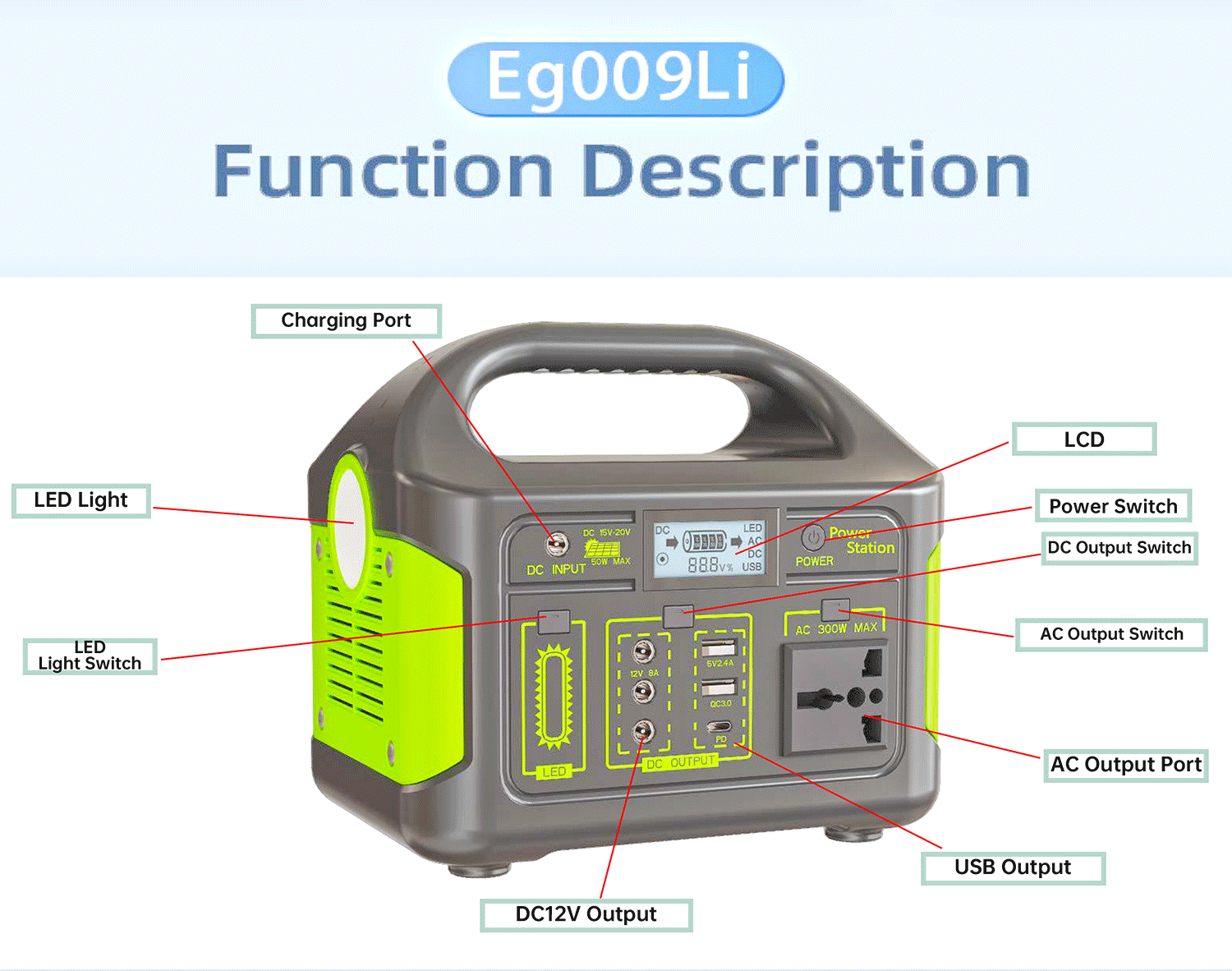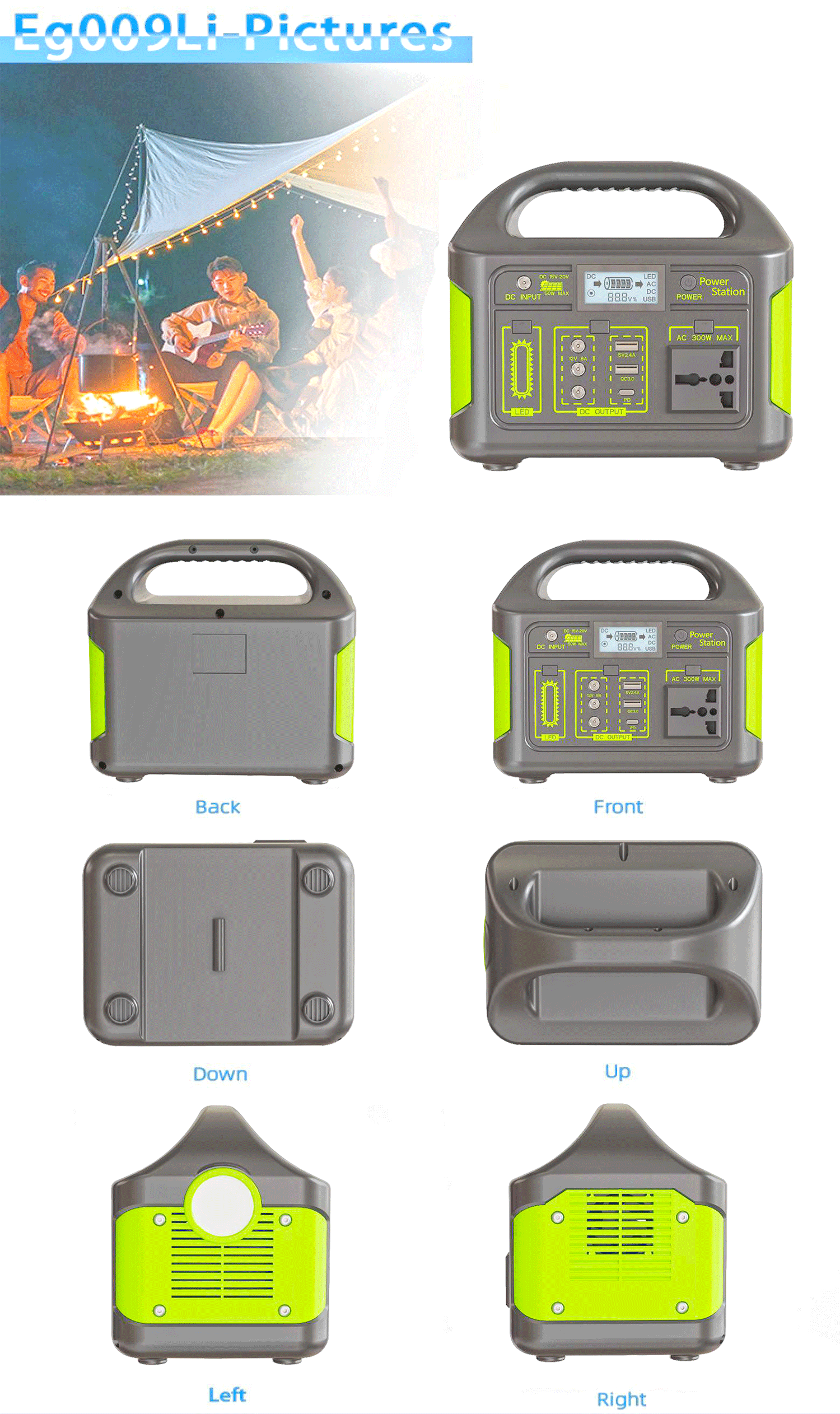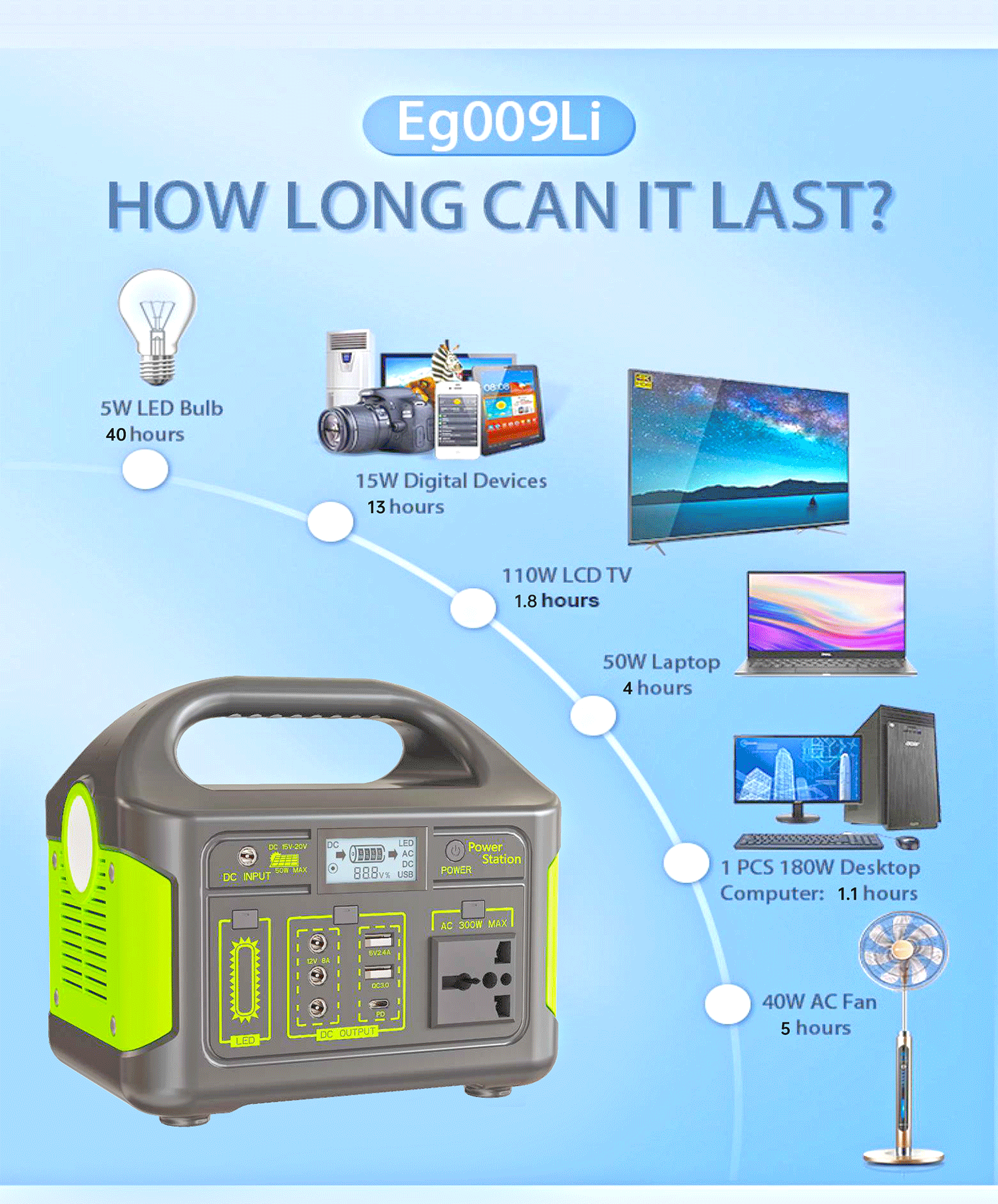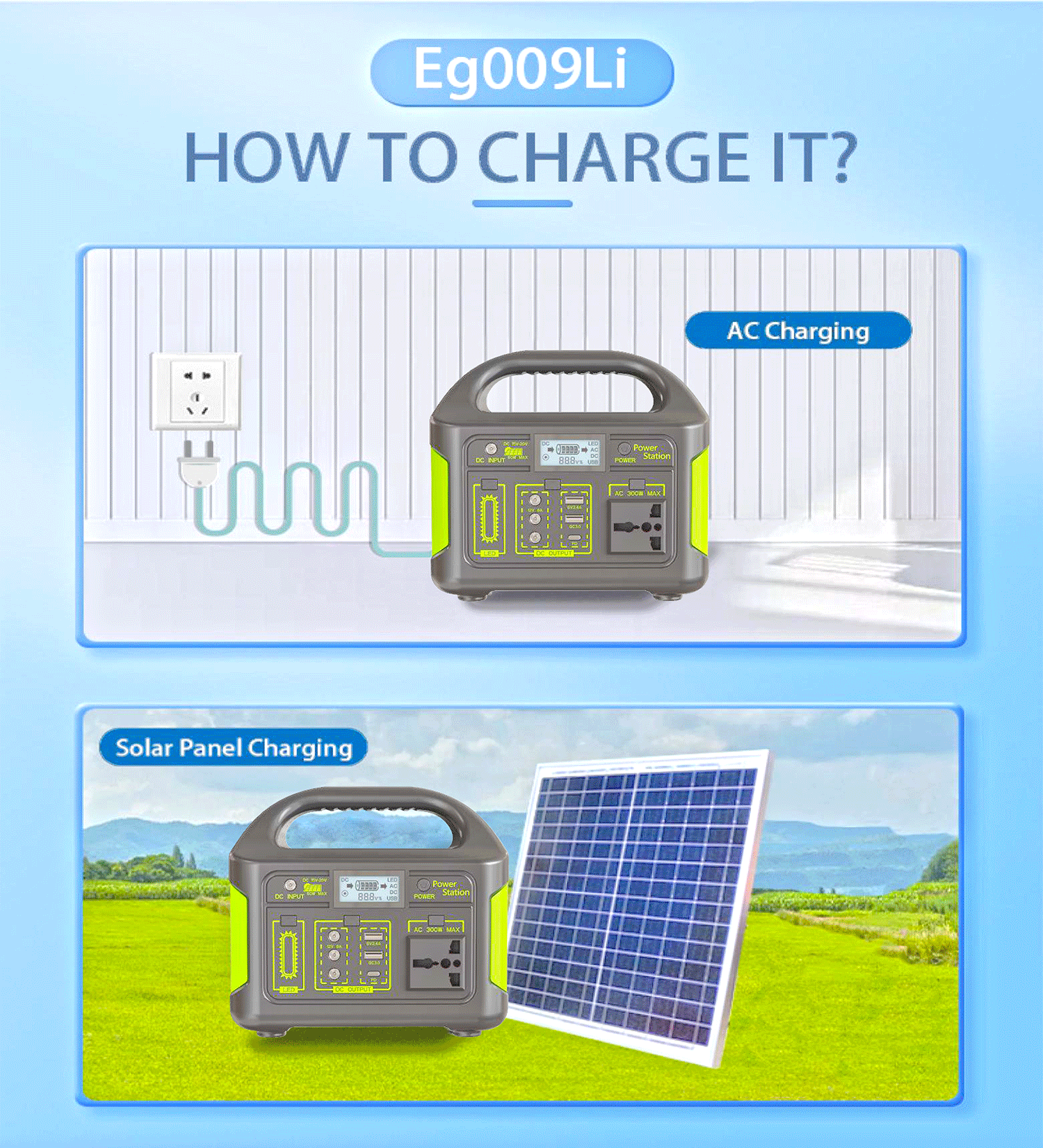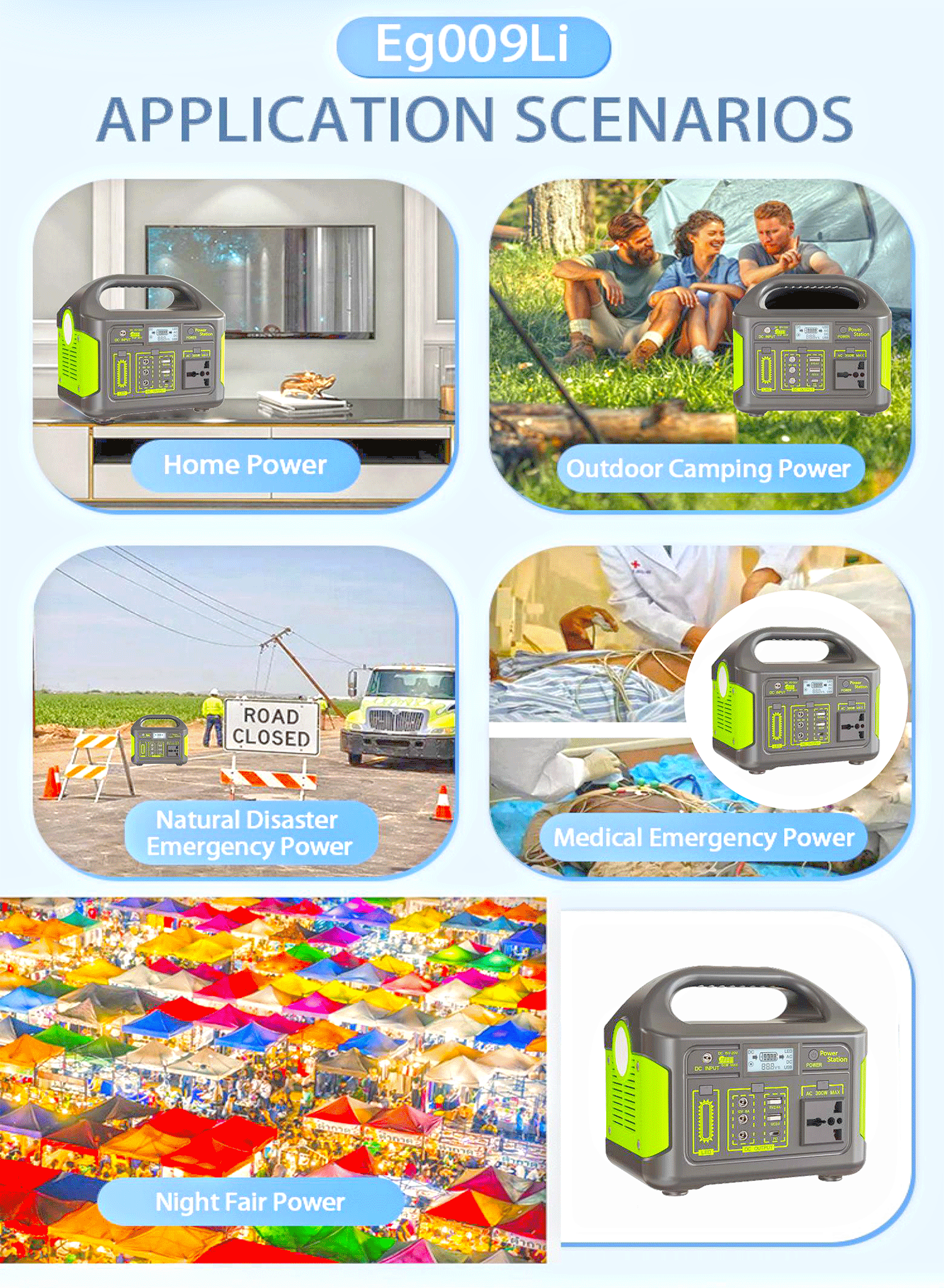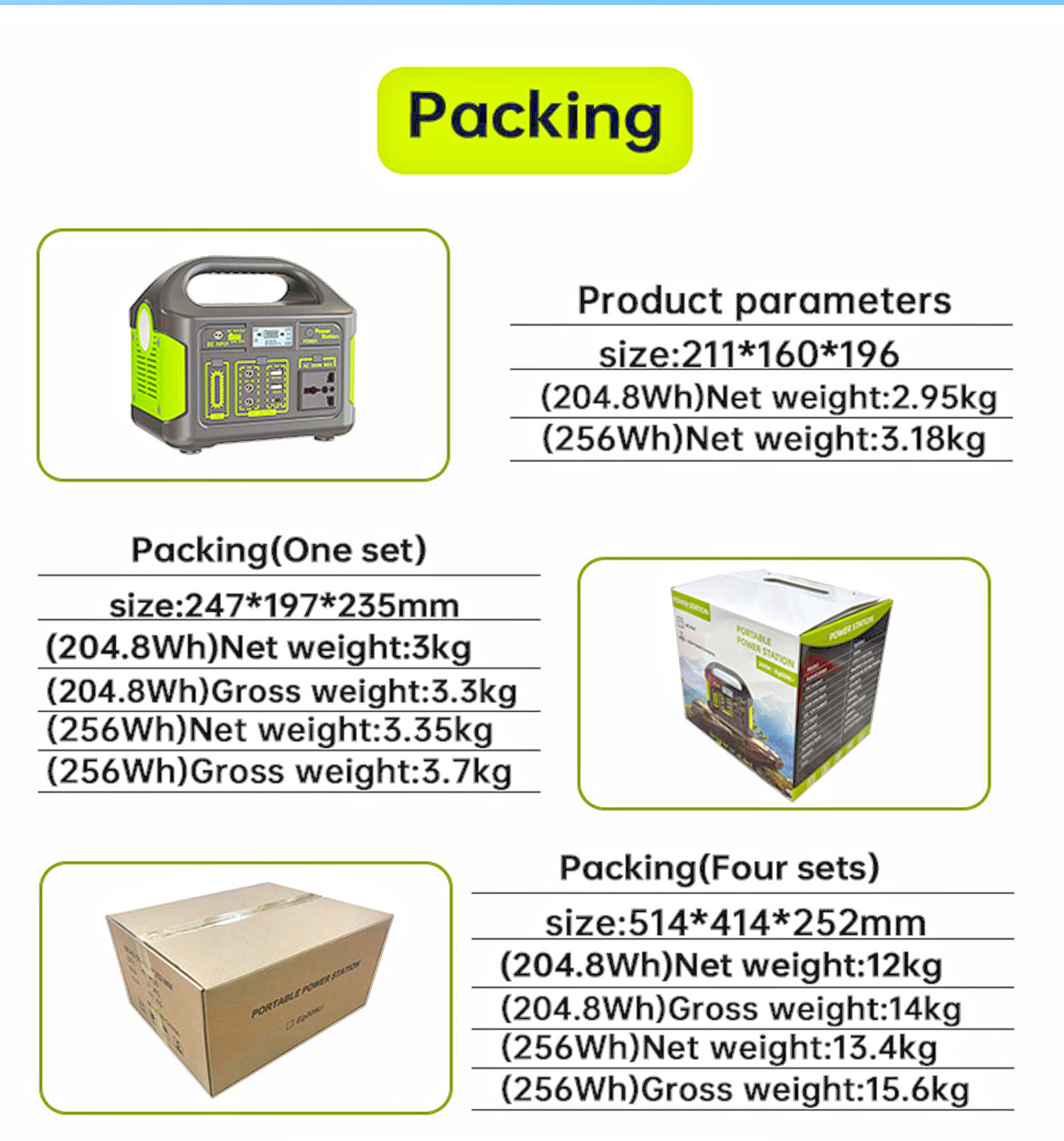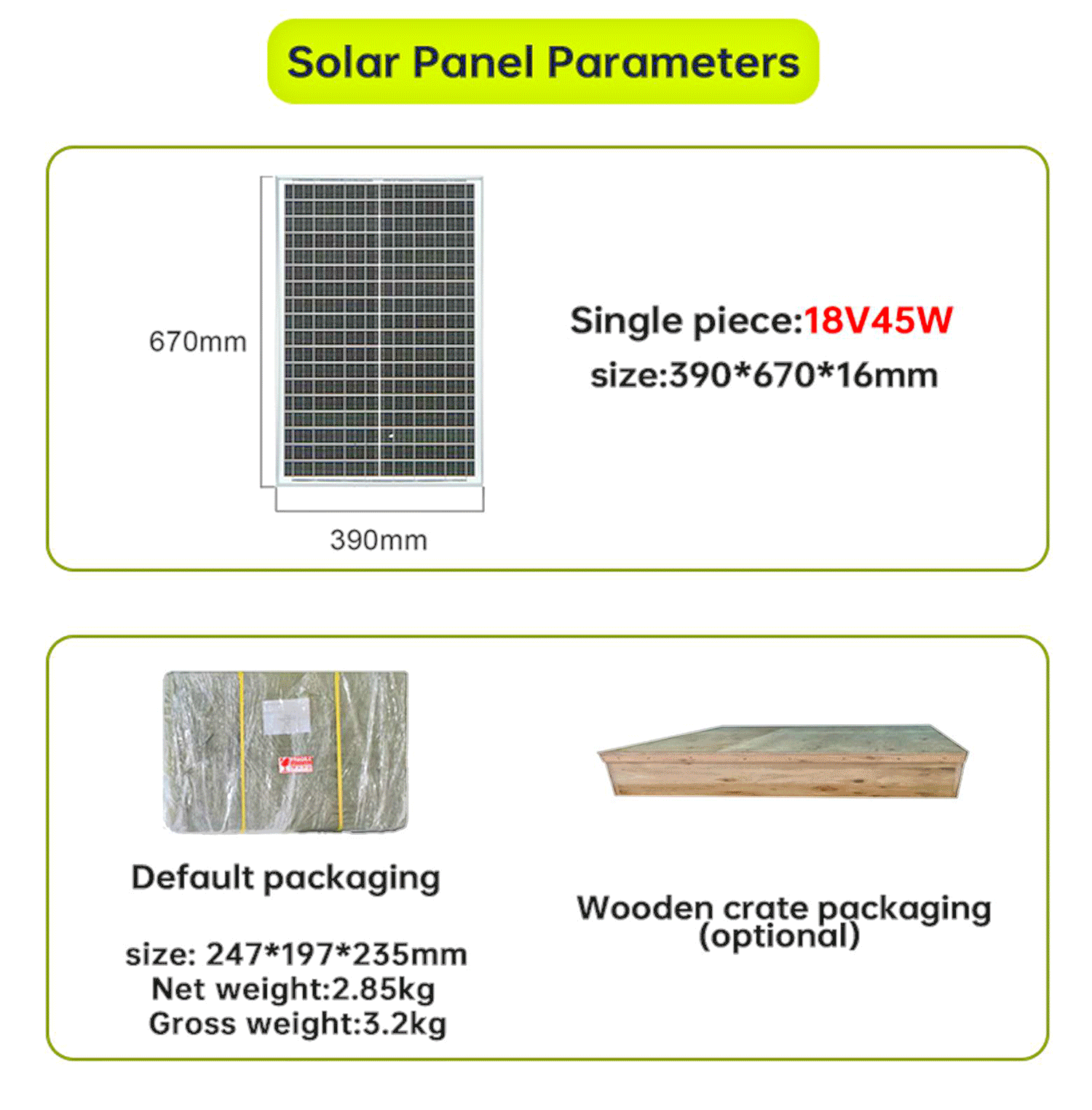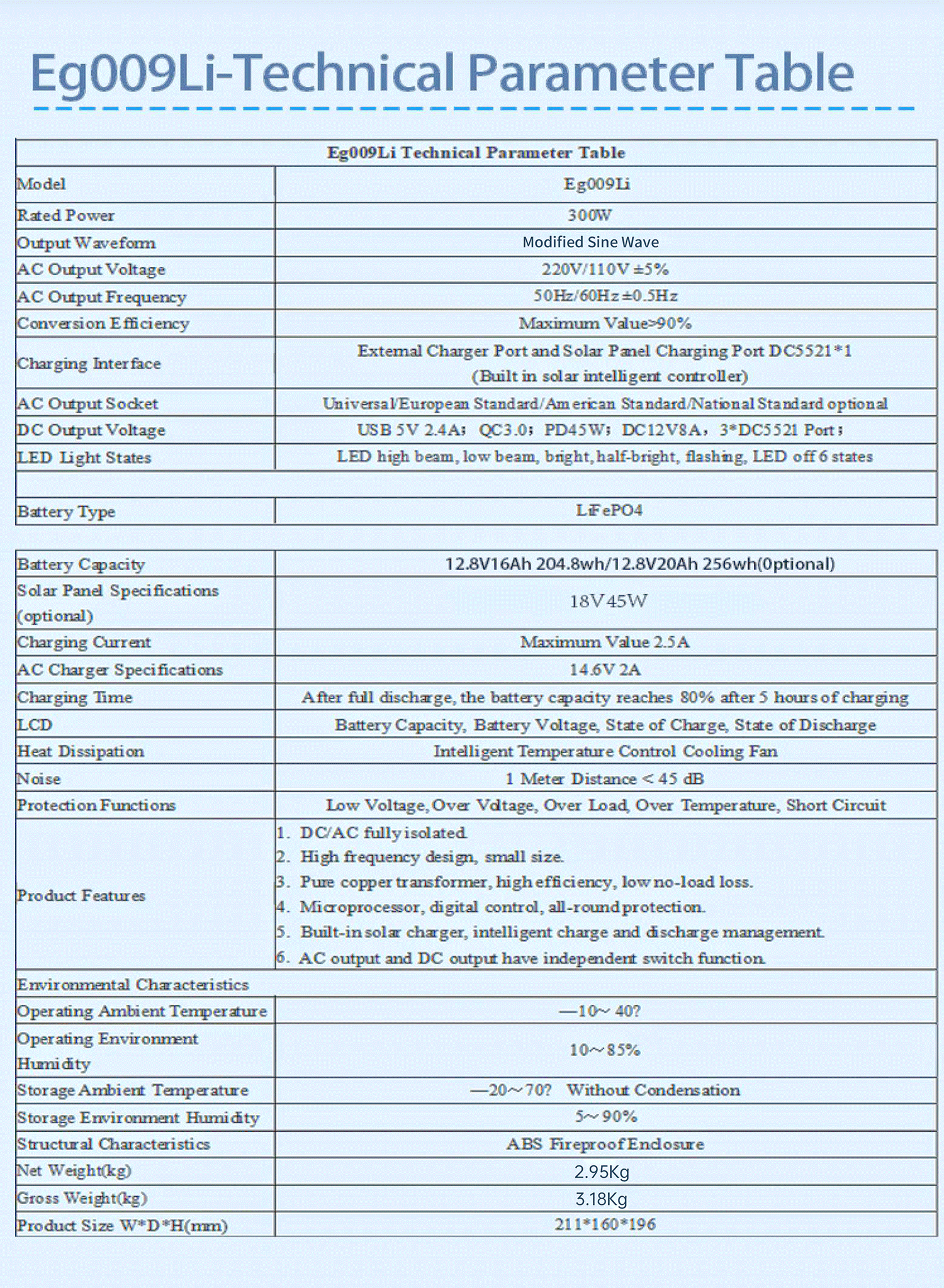1. Detailed explanation of core technical parameters
Battery capacity and energy density
· Two versions are available: 204.8Wh (basic version) / 256Wh (high-end version) to meet different battery life requirements.
· Cell type: lithium iron phosphate (LFP) battery, with high energy density and long life (cycle charge and discharge ≥ 2000 times*), is safer than ternary lithium battery.
· Comparison: Under the same capacity, LFP battery is more resistant to high temperature and less prone to fire than ternary lithium, suitable for complex outdoor environments.
Output performance
· 300W pure sine wave AC output:
· The voltage is stable at 220V/110V±10%, compatible with global power grid standards, and can drive precision equipment such as drones, projectors, and rice cookers.
· Advantages: Compared with the "modified wave" inverter, the pure sine wave has no harmonic interference, avoiding equipment damage.
·Multi-interface configuration:
·AC socket × 1 (300W max), USB-C (PD 60W), USB-A (QC 3.0), DC car charger (12V/10A), support powering multiple devices at the same time.
·Example: can power mobile phones (USB-C fast charging), laptops (AC port), car refrigerators (DC port) at the same time.
Solar charging capability
·18V 45W solar input:
·With a dedicated solar panel (optional), the 256Wh version can be fully charged in about 5-6 hours on a sunny day, realizing green energy recycling.
·Application scenarios: camping, disaster relief and other scenarios without mains power, continuous energy replenishment without interruption.
BMS battery management system
·Heavy protection mechanism:
